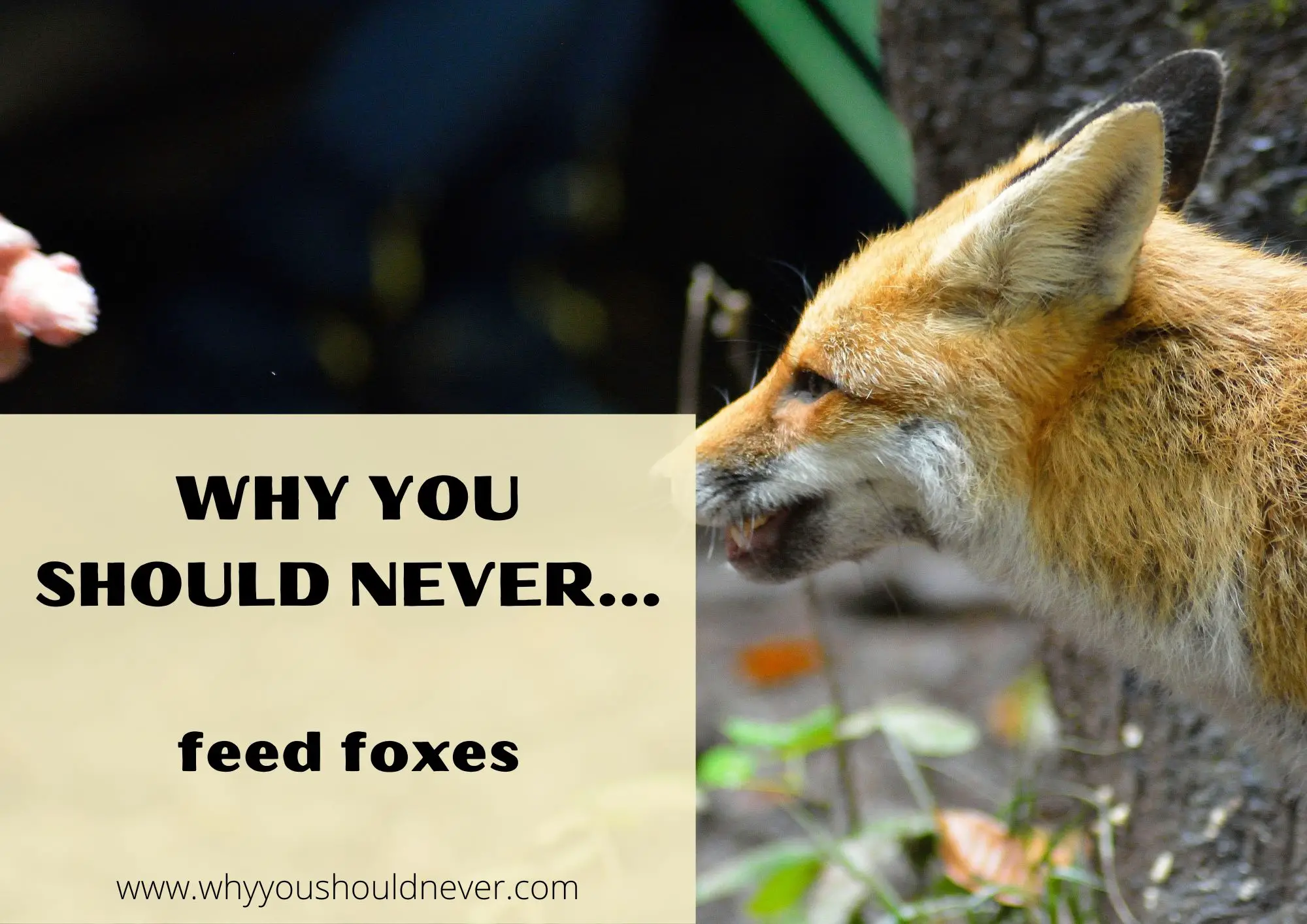![]()
Why You Should Never Feed Foxes
The bushy-tailed, frolicsome foxes that occasionally visit our neighborhoods are nothing less than enchanting. I mean, who could resist those lithe, auburn figures, moving around with an air of such lively intrigue?
It’s always a joyous event (for me, at least) when I spot a fox, especially when I see one up close. If you’re anything like me, this type of encounter kindles an innate urge to connect, to extend a hand to one of the planet’s most majestic animals.
Many times, in our quest to connect, our first thought is to offer foxes a bite to eat, because hey, what’s friendlier than sharing a snack, right?
But here’s the tricky bit: as well-intentioned as it may be, feeding these wild creatures is actually not the best idea. In fact, it can do more harm than good. So buckle up, folks, because we’re about to unravel why you might want to keep your food to yourself the next time you encounter a fox.
7 reasons why you shouldn’t feed foxes
1. You’ll mess up their diet
A fox’s dietary needs are not the same as our domestic pets’. They thrive on a diverse menu that includes small rodents, birds, rabbits, insects, and even berries. Offering them human food, or even pet food, could lead to nutritional imbalances, obesity, and other health problems.
Their system just isn’t adapted for what we’re serving up. Think about it like trying to live on nothing but fast food – not exactly the picture of health, is it?
2. Taking the ‘wild’ out of wildlife
Wild creatures need to learn and apply a set of survival skills – hunting, foraging, hiding, and more. By feeding them, we’re essentially dulling these instincts.
If a fox grows up associating food with humans, they become less capable of fending for themselves. It’s like giving them fish instead of teaching them how to fish. And in the wild, those skills are non-negotiable.
3. Creating problem foxes
As foxes grow comfortable with humans, they could become bold or even aggressive. There’s a risk of them losing their natural fear, leading to more frequent encounters, or worse, confrontations.
Remember, they’re not fluffy, overgrown kittens. They have sharp teeth and claws. We certainly don’t want our kindness to lead to unfortunate, potentially dangerous situations.
4. Risk of disease transmission
Though rare, there’s a chance of foxes carrying diseases like rabies or parasites that could be harmful to you or your pets. By feeding them, you’re inadvertently increasing the risk of transmission. In this case, prevention is definitely better than cure, so it’s best to keep a safe distance.
5. Increased road and human risks
Foxes, like any creature, will go where the food is. If they come to associate humans or specific locations with regular meals, they may cross roads or enter populated areas more frequently, increasing their risk of injuries, accidents, or causing public commotion. We’re unintentionally directing them into harm’s way.
6. Potential for negative human-fox interactions
As people notice more foxes and the problems they may cause, there’s a higher likelihood of negative human-fox interactions. Foxes could be seen as pests, leading to trapping, relocating, or even culling programs, which often end badly for the foxes. It would be a sad twist to our tale of wanting to help.
7. Word gets around in the fox community
You know how it is when you discover a great new restaurant; you can’t wait to tell your friends. Well, foxes aren’t all that different. Once a fox identifies a reliable food source, it may attract other foxes to the area.
This can lead to an increased population density of foxes in your vicinity, which exacerbates all the issues previously discussed, from heightened disease transmission risk to increased human-fox confrontations.
You might be intending to feed just one fox, but you could end up with a whole party at your doorstep, creating problems for both the foxes and your neighborhood.
Final Word
The sight of a fox prancing in your backyard, flaunting its fluffy tail and glistening eyes, can be quite a spectacle, one that tugs at your heartstrings and fills you with a sense of camaraderie. It’s easy to imagine yourself as a gracious host, inviting this intriguing guest over for a casual get-together, livening up the neighborhood with whispers of your delightful new acquaintance.
However, it’s crucial to remember, we’re not in a Disney flick, and our bushy-tailed friends aren’t exactly here for tea, scones, or casual banter. These creatures belong to the wild, adhering to their own set of rules, dietary practices, and lifestyles. As tempting as it may be to lay out a welcoming buffet, it’s vital that we respect their autonomy and wild nature.
So, the next time a fox crosses your path, acknowledge its presence with a warm nod from behind your window. Take a moment to marvel at the beautiful intersection of human and wildlife realms, and maybe even capture the memory with a quick snap.
But, when it’s time for supper, let them cater to their dietary needs with Mother Nature’s extensive menu. The most loving act we can perform for our fox friends is to maintain a respectful distance and avoid interfering with their natural behaviors.
